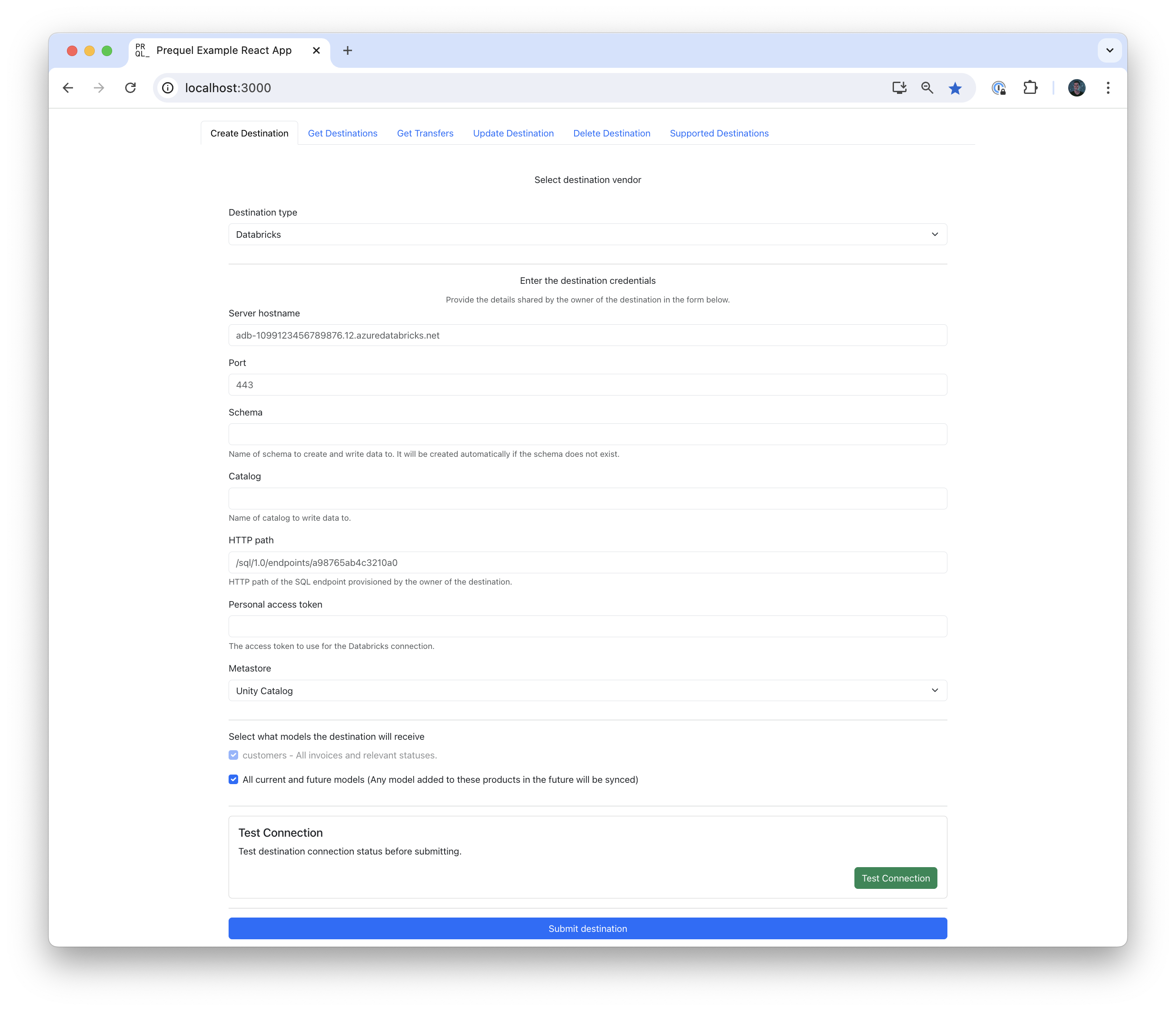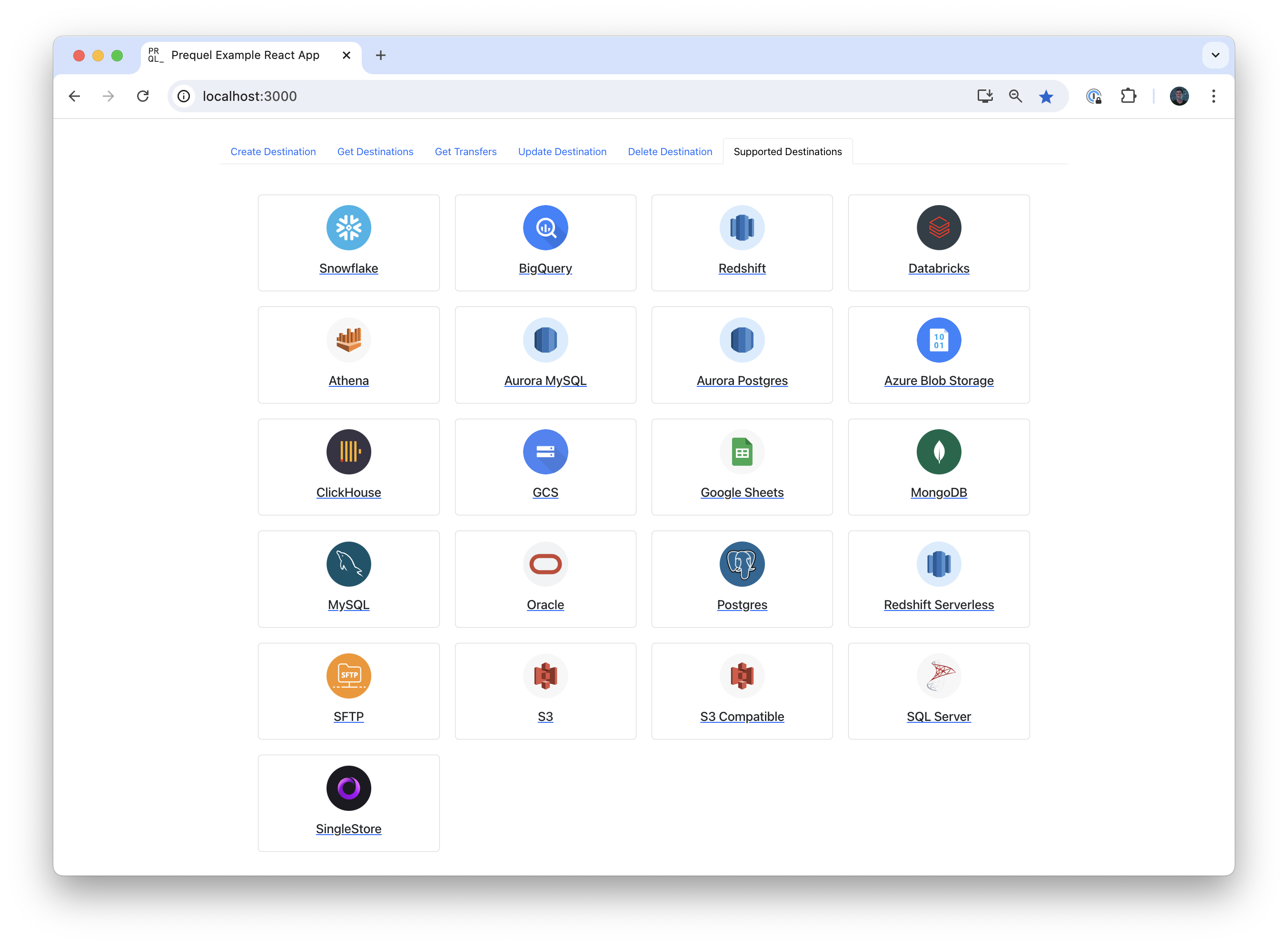- You must have a Prequel API key and know the corresponding Prequel host URL to successfully run the webapp. If you're unsure where to find these, please ask your Prequel support contact.
This example app shows how you can use hooks from @prequel/react in your React application. These hooks enable you to easily embed all of Prequel's functionality directly in your customer-facing app - including adding, viewing, updating, and deleting connections as well as viewing historical transfers & sync activity. This example uses React Bootstrap components to build a styled form, but it can be easily substituted with any component library, including your own. For more details on usage of @prequel/react, please see our docs.
By cloning the repository, entering your API key, and running npm run example, your browser should open to an interactive reference implementation of Prequel's embedded data sharing feature, as seen in the screenshots below.
- Clone the repo using your desired method
- Run
npm install - Create a
.envfile in the top level of the repo
API_KEY=sk_staging_1234567890abcdef
REACT_APP_PREQUEL_HOST=https://your-prequel-api.com
REACT_APP_PREQUEL_ORG_ID=12345678-abcd-1234-efgh-ijklmnopqrst- Populate the following environment variables in the
.envfile:
API_KEYwith your Prequel API Key- We recommend you use a staging API key
REACT_APP_PREQUEL_HOSTwith your Prequel Host- Be sure to prefix with
https://, i.e.REACT_APP_PREQUEL_HOST=https://<your-prequel-api>
- Be sure to prefix with
REACT_APP_PREQUEL_ORG_IDwith your Prequel Org ID- Your Org ID is a unique UUID assigned to your Prequel account. Reach out to your Prequel support contact to confirm this value.
- This isn't strictly required, but if you omit the Org ID, you will not be able to retrieve your account specific public keys (and related values) used for connection authentication
- Run both the Node server and React app with
npm run example- The React app will default to run on port
3000 - The Node server will default to run on port
9999
- The React app will default to run on port
In addition to demonstrating how to build a destination form, this example app illustrates other hook usages as well. To test other hook examples, you'll need to set the appropriate environment variables, documented below.
| Example | Environment Variables |
|---|---|
Get Transfers |
REACT_APP_RECIPIENT_ID |
You can set what port the React app and the sample Node server run on. To set the React port, add the variable REACT_APP_PORT to the .env file with your desired value. To set the Node port, add the variable REACT_APP_NODE_SERVER_PORT to the .env file with your desired value.

